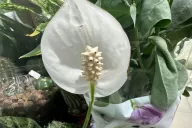Dill is a pleasant tasting spice that makes dishes much more appetizing.
This is why many gardeners cannot imagine a single gardening season without growing these greens.
To ensure that the dill harvest pleases you with its abundance, you need to follow a lot of rules.
And we are talking not only about watering and timely application of fertilizers, but about five more important points.
The right place for landing
Despite all its unpretentiousness, not all areas are suitable for dill.

So, the plant should not be in the shade under any circumstances. The better the place is illuminated, the greater the chances of a good harvest.
The right time for planting
It is worth planting dill on days when it has already become warm enough.
It’s good if the air temperature is at least +16 degrees.
Yes, the garden crop can withstand much lower temperatures. However, planting in warm weather is the key to high dill yields.
Suitable "neighbors"
It is good if dill grows next to potatoes, legumes, beets and cabbage.
Such "neighborhood" will guarantee the absence of pests and diseases. There will be no deficiency of nutrients.
Unwanted "neighbors"
But if the dill’s “neighbors” are tomatoes, carrots and celery, then it’s unlikely that you’ll be able to collect a lot of juicy greens.
Do not use excess fertilizers
During the period of dill cultivation, lime and dolomite flour should not appear in the soil.
Moreover, these agents cannot be added to the soil cover before planting.
If fertilizers were used, then it is no longer worth growing dill in such a bed during the current summer cottage season.








